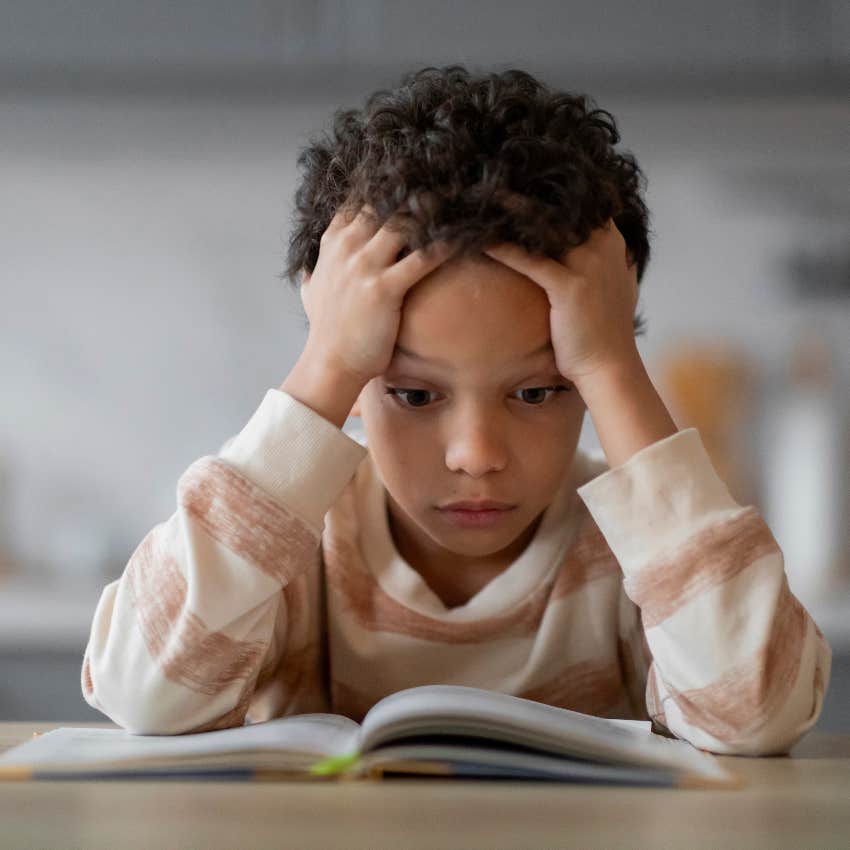Woman Says All People Under The Age Of 20 ‘Varying Levels Of Illiterate’
The literacy crisis is real and far-reaching.
 Stock-Asso | Shutterstock
Stock-Asso | Shutterstock Illiteracy is a major problem in the United States. In 2024, 24% of adult Americans are illiterate. Over half of U.S. adults, 54%, read below a 6th-grade level. This is an incredibly concerning trend.
One woman on X claimed that all people under the age of 20 are 'varying levels of illiterate.'
Jeanie, an X user, shared her thoughts on the literacy crisis and how it is disproportionately affecting young people.
“If you haven’t talked to someone under the age of 20 recently, they’re literally all varying levels of illiterate, and I’m not trying to make a joke here,” she wrote in a post.
Many X users were quick to agree with Jeanie.
“I’m 16 and the amount of peers at my school that can’t read a sentence is so sad," one user admitted. "We are in high school but they can’t read sixth-grade [vocabulary] words. My teachers purposely choose me to read because they know I can and don’t want to deal with the other kids. And I don’t blame them.”
“At least I don’t have to fear the generation below me coming in [and] taking my job or something because they can barely read and write,” another person wrote.
X user @Mozart_TheGhost blamed the lack of literacy on pandemic-era learning.
“From 2020-2023 kids would wake up five minutes before class, log into Zoom while still laying in bed, and lay there half asleep while their teachers talked at them,” they wrote. “Watched it happen to my younger sister and I’m certain this stunted this generation. They weren’t learning anything.”
Still, some parents disagreed with Jeanie and shared that their children, particularly teenagers, enjoy reading books and do so for fun.
The literacy crisis is very real.
According to the Reading is Fundamental Literacy Network, “25 million children in the U.S. cannot read proficiently.”
The site further noted that 67% of fourth graders are currently reading below their grade level. This, they said, is part of the reason why 8,000 high school students drop out daily and why only “37% of students graduate high school at or above reading proficiency.”
 Prostock-studio | Shutterstock
Prostock-studio | Shutterstock
EdTrust added that the literacy crisis disproportionately affects minority groups.
“There is overwhelming evidence that nearly all children can learn to read,” they said. “But in schools across the country, many students — especially students of color, students from low-income backgrounds, multilingual learners, and students with disabilities — are not yet skillful readers.”
Addressing the literacy crisis is easier said than done.
Many different approaches can be taken to attempt to fix the literacy crisis in the U.S. EdTrust suggested it should all start with rooting out problematic “methods and curricula.”
“In many districts and schools, outdated teaching methods and curricula that have been proven ineffective, and even harmful, are still being used,” they said. “Adding to this problem is that too many teachers enter the profession without any training in evidence-based reading instruction, which means they lack the knowledge to effectively teach their students how to read.”
Making the issue even worse, EdTrust argued, is the censorship and banning of books in which students can recognize their own identities and see themselves mirrored back.
It will take time to undo years of damage. But, given how bad things have gotten, the work will definitely be worth it.
Mary-Faith Martinez is a writer with a bachelor’s degree in English and Journalism who covers news, psychology, lifestyle, and human interest topics.

